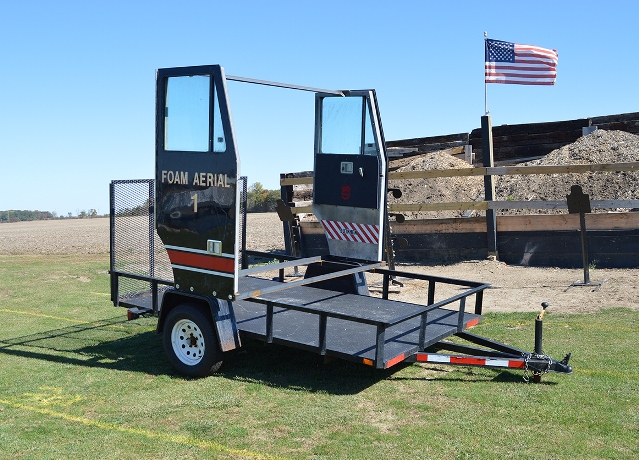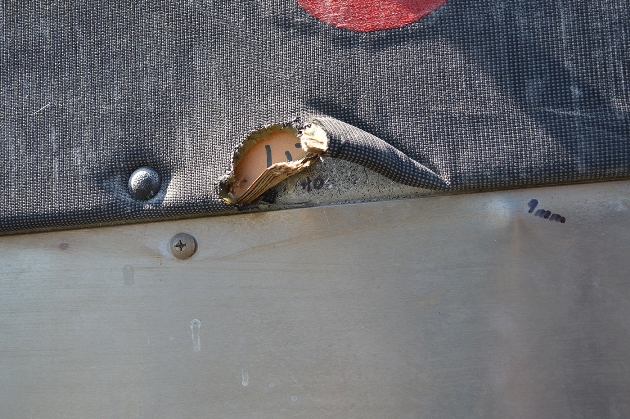By Jeremy Jones
The absolute most deadly type of attack that can be perpetrated on a firefighter or first responder is the ambush attack. If you are the intended first target of an ambush attack, there is generally one thing—and one thing only—that will save you: luck! But, if you have a little luck on your side, good situational awareness and “preplanning” (as discussed in my previous articles) will play an essential role in your survival if your crew is the target of an ambush attack.
I say “a little luck on your side” because surviving an ambush attack requires some good luck shining on you. If a determined individual, with competent skills and adequate firearm equipment targets you for an ambush attack, then there really isn’t much defense for it.
The word ambush means “to attack (someone or something) by surprise from a hidden place.” How do you truly defend against a surprise attack from a hidden place? You don’t. Any of us, at any time, could be a victim of an ambush attack.
Besides luck, there are several other factors that come into play in surviving this type of attack. First, consider that you may not be the intended target; you just may be a target of opportunity by simply being one of the first responders on the scene. Remember, you are a very predictable target. If someone calls 911 to report a fire, you will respond. If several responders arrive on scene before the attack takes place, one person, individually, is not generally targeted with great determination. This type of cowardly killer wants to shoot one responder and then quickly shoot the next while the opportunity to do so still exists during the confusion. If gunfire erupts at your scene, it is guaranteed to be chaotic and confusing. Initially, you may not even know from where the gunfire is coming If you are on a hoseline, one tactic you can use to buy yourself a few seconds to decide your next move is to turn the nozzle on a full fog pattern. This makes you and your crew on the line undistinguishable targets; of course, the attacker could shoot blindly into the fog pattern and possibly hit every one of you. Then again, because you are not an easily identified target, the attacker may divert his attention elsewhere.
If you read my prior articles, or attended one of my classes entitled “Assault: A New Reality for First Responders,” you will recall my advice to “really size up” your scene on arrival to find and make mental notes of your exits and sources or cover/concealment. Now, you can see the validity of that advice. When seconds count, standing behind a fog pattern with .223 bullets whizzing by is not the ideal situation to take the time to look for an exit or cover/concealment.
If you arrive on the fire scene and your apparatus begins to take on gunfire, and you can do so without leaving a crew member behind, GO! Drive out of the scene and out of the line of fire. Your apparatus will provide limited ballistic protection, and it is to your advantage to present your attacker with a moving target. And it is with this tactic that prompted me to want further study what type of protection apparatus could realistically provide.
With the help of many others whom I will thank at the end of this article, I conducted ballistic testing on two fully-intact Sutphen rear-cab apparatus doors. First, we had a metal frame attached to hold the doors upright and eight feet apart, the average width of a fire apparatus cab. We placed the doors on a trailer to get them off the ground at a realistic height (photo 1). From a distance of 25 feet—to simulate a truck pulling up to a scene, stopping on the roadway, and having an attacker standing on the opposite side of the road just past where a sidewalk may be located—we shot the doors with three different handguns. All of the handguns were loaded with hollow-point (the ones that do the most damage to humans) and we were surprised by the outcome.

(1) Our replication of a fire apparatus. (Photos by Paul Combs)
The first two shots were fired from 9mm and .40 caliber handguns and only penetrated the outside wall of the door (photo 2). Thinking the door may have reinforced structural components on the lower portion for collision protection, we again shot the door with the handguns at a higher point on the door. We shot the door from the same distance with the 9mm, .40 caliber, and .38 Special, and were amazed by the results. All three rounds were completely stopped by the outside wall; no penetration whatsoever. All of the projectiles were found on the ground underneath their point of impact. We shot the door again, just for good measure, with the handguns, and got the same results! After we were done with all of the shooting, we disassembled the doors to determine the damage from each round fired. The door did not have additional reinforcing structural components, as we thought. The first two handgun rounds that penetrated the outer layer of door barely dented the inner door skin. I have no explanation why the first two shots fired penetrated the outside skin and the rest did not. But, none of the rounds fired from a handgun would have entered the cab of that apparatus.

(2) The first shots with handguns (9mm and .40 caliber) from 25 feet away. Both shots penetrated the 3/16-inch 5052 Grade aluminum outer door skin.
Am I saying that if your attacker is shooting at you while you are still in the truck with a handgun, then you are perfectly safe? Absolutely not! Years of shooting experience have taught me one thing: bullets can and will do unpredictable things. BUT, as long as you can stay below the window level, you are fairly safe inside the apparatus against handgun fire (photo 3). I would advise to drive from the scene, if possible, vs. exiting the truck, where you have no ballistic protection. Of course, each incident is unique, and situations may dictate the safest course of action would be to exit the truck. For example, if your apparatus driver is incapacitated and unable to drive away from the attacker, who is quickly approaching the truck to climb onto the sideboard to acquire his target (you), common sense tells you that being a “fish in a barrel” is not a good tactical option at this stage.

(3) None of the handgun rounds penetrated the 1/8-inch 304 Stainless-Steel inner door skin.The two rounds that penetrated the outer door skin barely dented the inner door skin.
We then shot the apparatus doors from 100, 65, and 25 feet with an AR-15 .223 rifle. Shots from all three distances did penetrate the first door and would have entered the passenger compartment. Surprisingly, all three rounds were stopped by the second door. Now, would I want to have the only thing between me and .223 bullets to be two apparatus doors? Well, no! But, that first door is taking away a lot of that projectile’s energy, and I will take that over being out in the open. Add to the equation that the truck is possibly moving away from the scene, firefighting equipment in the cab may interfere with a bullet’s path, your personal protective equipment, and so on, your chances of survival increases dramatically.
Next, we shot the doors with a .308 caliber sniper rifle, and the results were as expected (photo 4). Neither door did much to slow down, let alone stop, the rounds. A cowardly killer with a high-powered rifle and adequate shooting skills is a very deadly combination.

(4) Captain Scott Berning, Fort Wayne (IN) Police Department, shooting the doors with his .308 caliber sniper rifle at 100 yards.
As you can see from the ballistic testing, your apparatus is more concealment rather than cover, depending on which type of ammunition is being fired at you. Having been shot at, I can testify to the fact that once bullets start flying, you will not take the time to attempt to determine exactly with what type of firearm is being shot at you. Remember, good situational awareness and a complete size-up (locating avenues of escape and cover/concealment) can be a life saver in this type of violent encounter.
We discuss this topic in my class, “Assault: A New Reality for First Responders,” which I teach to firefighters and first responders all over the state of Ohio. I ask my students to give me a word that describes what type of target they are to a coward ambushing them. The answers I receive most often are “easy,” “visible,” “high profile,” and “unarmed”; all of which are very correct. When I remind them how predictable they are as targets, the room usually goes silent. Remember this when you roll out on your next call: Everyone knows and expects you to respond. Historically, recent cowardly killers of first responders did not have a beef with firefighters. It’s just that firefighters are easy, visible, high profile, unarmed and, most of all, predictable targets delivered to them in a fire truck. Be careful, be aware and, most of all, be safe!
For more information about this article, my testing procedures, or upcoming emergency responder assault classes, please contact me at familyprotection4@gmail.com.
Author’s note: I must thank several people who helped me accomplish the ballistic testing that was done on the apparatus doors; I never could have got this all done myself. First and foremost,I want to thank my wife Vicki, who helps me with all aspects of Family Protection Group, LLC and travels the state with me while teaching our classes to first responders. I also want to thank my brother, Officer Jason Jones, Gahanna (OH) Police Department (PD); Officer Randy Mohre, Edgerton (OH) PD; Captain Scott Berning, Fort Wayne (IN) PD; Captain Ed Bohn, Defiance (OH) Fire Department (FD); Andy Her, Sutphen Corporation; and last but certainly not least, Firefighter/EMT Paul Combs, Bryan (OH) FD.
Jeremy Jones is a 22-year veteran of law enforcement and currently serves as a chief of police in Ohio. During his law enforcement career he also served 12-years as a Level II firefighter. He is the owner and lead instructor of his training company, Family Protection Group, LLC (www.familyprotectionllc.us), which specializes in first responder defense training, armed and unarmed self-defense tactics. Jeremy is a graduate of the Police Executive Leadership College and a Session 248 graduate of the FBI National Academy. Jones can be reached for questions or comments at familyprotection4@gmail.com.
MORE JEREMY JONES

